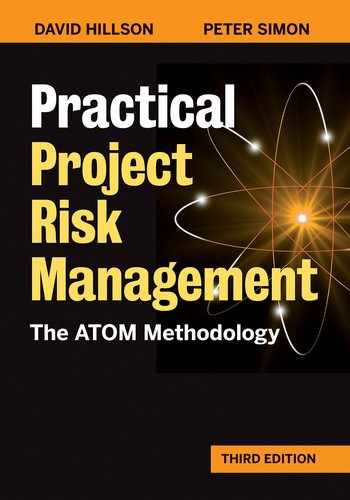Authors’ Preface
Everyone agrees that managing risk is a core part of project management, because all projects are risky. Risk management focuses on addressing proactively the implications of uncertainty on the achievement of project objectives. Despite this shared view, for many project managers and their teams, as well as for risk practitioners, the problem comes when they try to make risk management work in practice. The training course has been attended, the theory is well understood, and the tools and techniques all make sense. There is no problem with “what, why, when, where, and who.” But somehow it all seems different when it comes to your project. If only someone could show you how.
Through this book, we hope to make our expertise available to hard-pressed project management professionals, with practical advice on how to manage risk properly, efficiently, and effectively. This is not a book of academic theory or generic principles, although it is firmly based on current international best practices and reflects leading-edge thinking and developments. This book is about actually doing it, so that businesses and their projects can manage risk effectively, minimizing threats and maximizing opportunities in order to optimize achievement of objectives.
This book will be helpful to someone with no prior knowledge of risk management and who needs to implement a proven approach, as well as to someone who has some limited experience but needs guidance on how to apply risk management successfully. Risk management can really work in practice—this book shows how.
We have taken best practice guidelines and standards and translated them into a comprehensive, proven, practical methodology for managing project risk, presented as a simple stepwise process, leaving no ambiguity about what should be done next. We call this methodology Active Threat and Opportunity Management (ATOM), reflecting our belief that risk management is about taking action and that risk management must be targeted equally at both downside risk (threats) and upside risk (opportunities). For each process step, practical advice, hints, and tips are offered on how to get the most out of the risk management process.
The first edition in 2007 described our ATOM methodology in enough detail to allow anyone to use it on their project, regardless of project size or industry sector. The award-winning second edition (2012) was prompted by feedback from ATOM users, both commercial practitioners and noted academics, and our own desire to continuously improve the methodology. In that edition we added a chapter on managing risk in programs, a key dimension in today’s world of ever more complex initiatives. We also made minor changes to all chapters to reflect the improvements we had made to our working practices, and we further aligned ATOM with relevant international standards.
In this third edition we offer further practical guidance on how to apply ATOM, focusing on areas that people continue to find difficult. There are two new chapters on the ATOM risk workshop (Chapter 16) and the role of the risk facilitator (Chapter 17), since much of the hard work of the ATOM risk process takes place in the context of a risk workshop or risk meeting, and facilitation is supposed to make workshops easier and more effective. We have also updated Chapter 15 on Quantitative Risk Analysis (QRA) to take account of how some tools work, and to explain how QRA might be used to benefit small projects. The final chapter addresses risk management in a wider context beyond projects. In the second edition this described managing risks in programs, and the chapter has now been extended to include portfolios, with a new discussion on risk efficiency. In addition, we have made small modifications and improvements in a number of places to reflect our own continued learning and experience.
With our combined experience of over 60 years of managing risk on projects, we know that risk management works. It frustrates us to hear people saying that it’s too hard, or not worth the effort, or just a waste of time. ATOM is our answer—a simple, scalable risk process that applies to projects in all industries and business sectors. We hope that you will not just read this book, but that you’ll put what you read into practice, since this is the only way of gaining the promised benefits. None of us has time to waste on processes and activities that don’t work. Risk management does work, if it is done properly. But please don’t take our word for it; try it for yourself and find out.
David Hillson and Peter Simon
